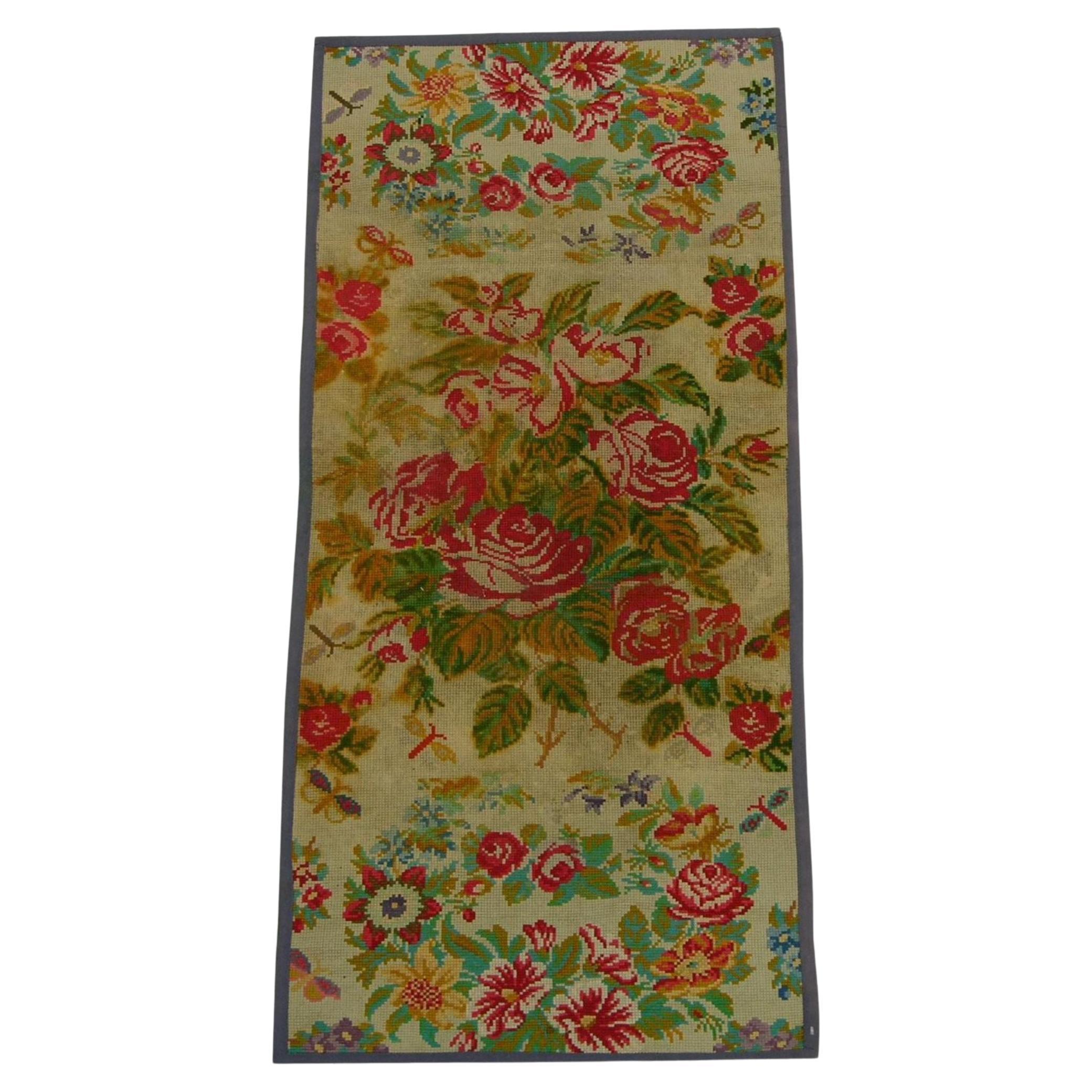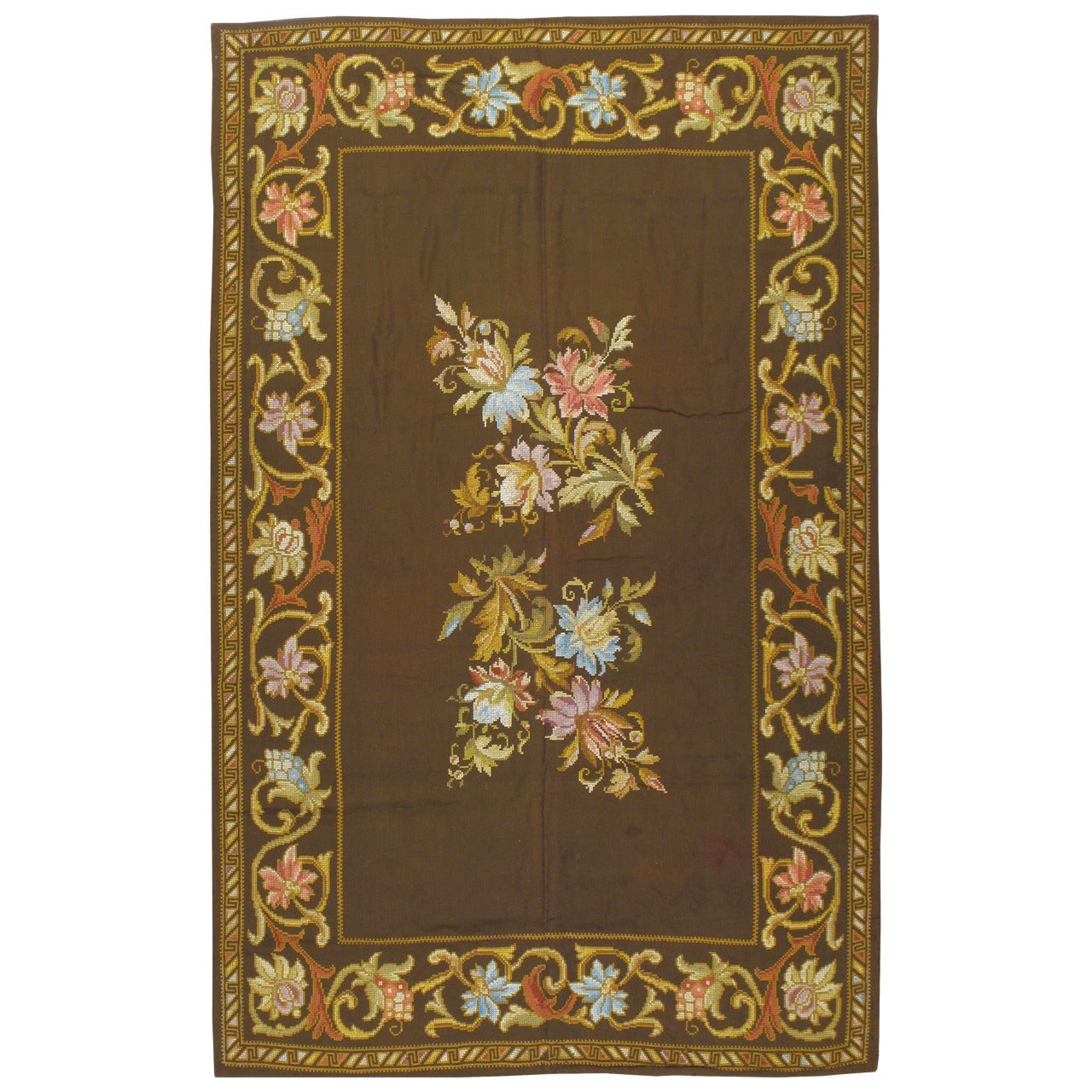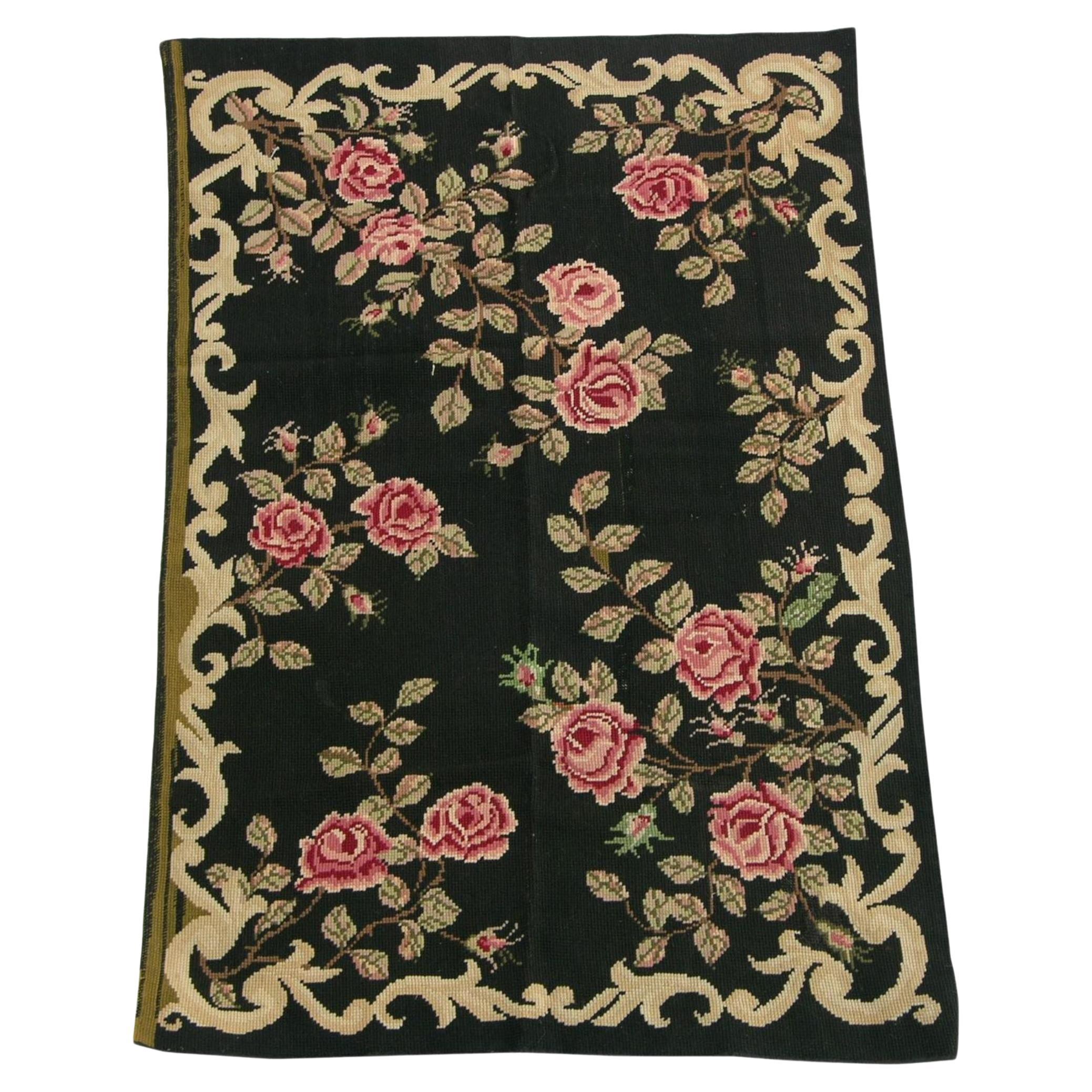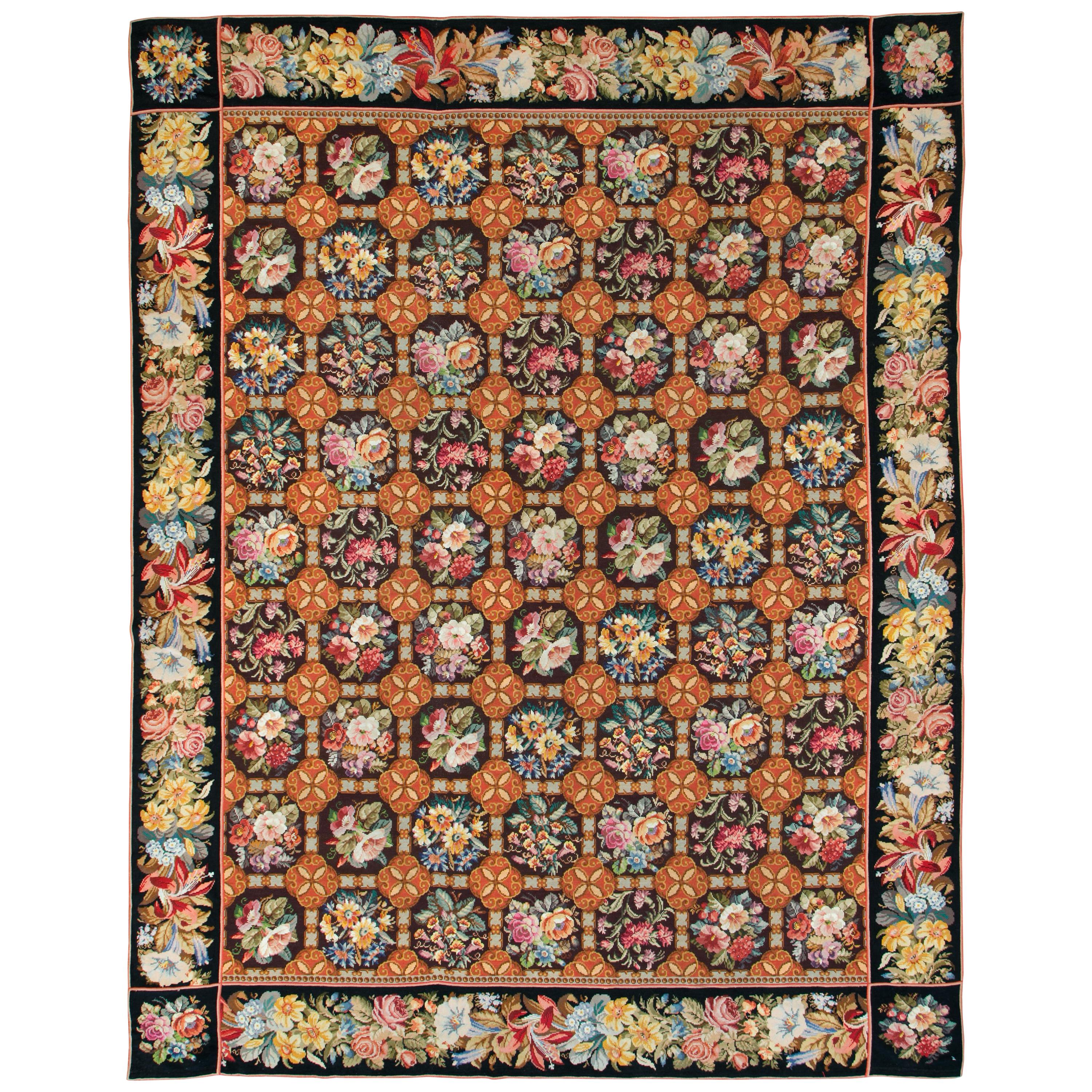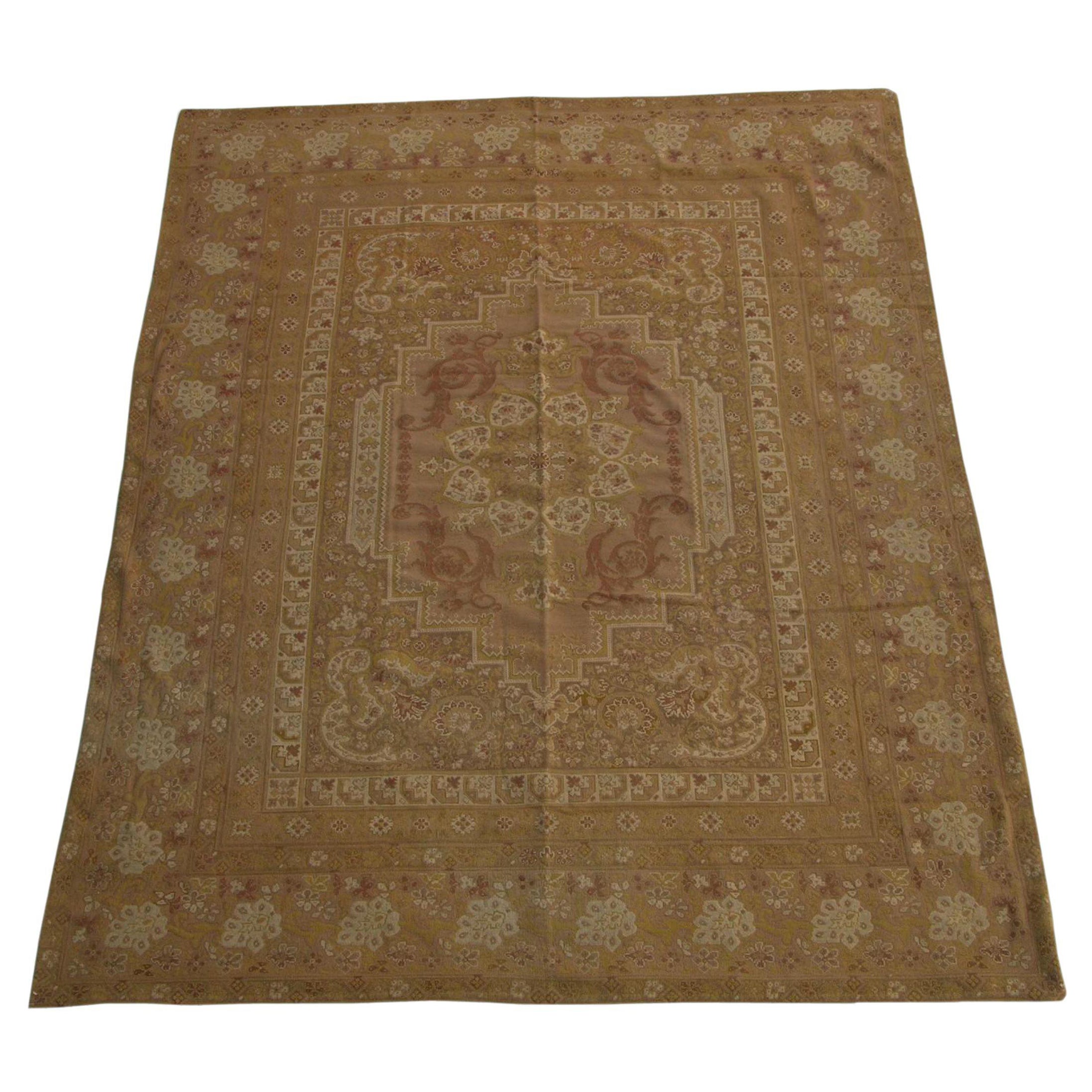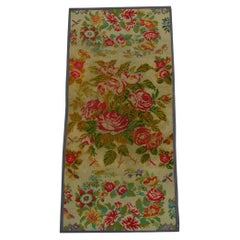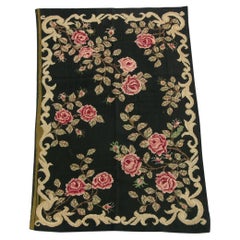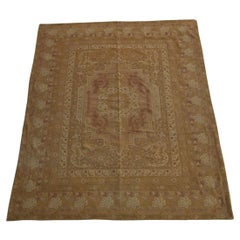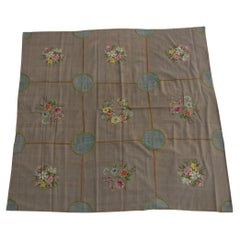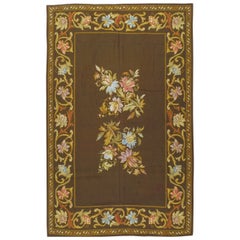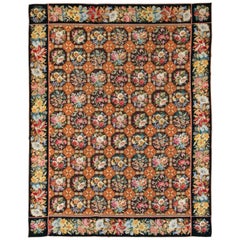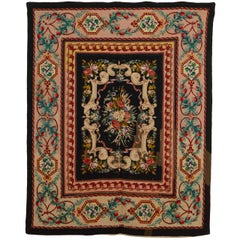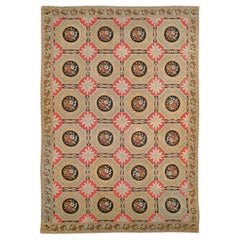Want more images or videos?
Request additional images or videos from the seller
1 of 5
1920s Antique Needlepoint Runner
$1,005
£754.98
€870.62
CA$1,394.57
A$1,549.67
CHF 812.05
MX$19,003.98
NOK 10,357.16
SEK 9,743.64
DKK 6,497.93
Shipping
Retrieving quote...The 1stDibs Promise:
Authenticity Guarantee,
Money-Back Guarantee,
24-Hour Cancellation
About the Item
Needlepoint rugs were created using the traditional needlework weaving technique that is used to make everyday items from furniture to carpets and artwork. However, it has a fascinating history both as a hobby and as an industry. When many people think of carpets, they think of pile carpets or flat weave kilims, but needlepoint has also been used to create beautiful carpets. These carpets are durable and an important part of carpet history.
The technique for creating needlepoint rugs and other objects made from needlepoint has remained unchanged since its beginnings in the 17th century. It all begins with a canvas with evenly spaced warp and weft. It is often stiffened and made from an extremely durable material such as jute, cotton, or other suitable materials. Historically, canvases were made from jute or linen.
It also requires thick, durable wool yarn in many bright colors. Many of the historical rugs were created using only natural vegetable dyes that were available in the area. However, do not think of this as a limited color palette because the range of colors found in needlepoint rugs includes almost every color in the rainbow. Both the spinners and the wool dyers were highly skilled in their craft. This provided the artist who created the needlepoint carpets with a vast array of colors to use in their works.
The process of creating a needlepoint rug involves making stitches diagonally across the intersections of the canvas. It is interesting to note that until the 19th century, the term needlepoint was not used. This work was referred to as canvas work previously. The patterns are created by changing colors in the stitches.
In the early pieces, there is only one stitch used to create the pieces. However, through the years, over 150 stitch variations developed. The stitch variations are created by the intersection of stitches into a single space or a combination of long and small stitches. These stitch variations became more popular in more recent work, such as those produced since the 1970s.
However, you will find different stitches in the Italian Bargello work of the 19th century, but for the most part, historical pieces used only the most basic stitch. The artistic design that was similar to painting on canvas with the colors, only the stitches are the brush strokes. Once the piece is finished, the edges are bound using a binding stitch, and it can be sewn onto a backing cloth if desired.
Making a needlepoint carpet is a relatively simple process and uses few materials. It is a long process and requires many hours of dedication and work. You are encouraged to explore the many different needlepoint rugs that occasionally make their way into our collection. Now that you understand the process and a little bit more about them, you can truly appreciate the works of art that they are and why there are an essential that everyone should have in their collection.
About the Seller
5.0
Platinum Seller
Premium sellers with a 4.7+ rating and 24-hour response times
Established in 1920
1stDibs seller since 2023
63 sales on 1stDibs
Typical response time: <1 hour
- ShippingRetrieving quote...Shipping from: Los Angeles, US
- Return Policy
Authenticity Guarantee
In the unlikely event there’s an issue with an item’s authenticity, contact us within 1 year for a full refund. DetailsMoney-Back Guarantee
If your item is not as described, is damaged in transit, or does not arrive, contact us within 7 days for a full refund. Details24-Hour Cancellation
You have a 24-hour grace period in which to reconsider your purchase, with no questions asked.Vetted Professional Sellers
Our world-class sellers must adhere to strict standards for service and quality, maintaining the integrity of our listings.Price-Match Guarantee
If you find that a seller listed the same item for a lower price elsewhere, we’ll match it.Trusted Global Delivery
Our best-in-class carrier network provides specialized shipping options worldwide, including custom delivery.More From This Seller
View All1920s Antique Needlepoint Runner
Located in Los Angeles, US
The technique for creating needlepoint rugs and other objects made from needlepoint has remained unchanged since its beginnings in the 17th century. It all begins with a canvas with ...
Category
Vintage 1920s Other Russian and Scandinavian Rugs
Materials
Wool
Antique Needlework Floral Rug
Located in Los Angeles, US
Needlepoint rugs were created using the traditional needlework weaving technique that is used to make everyday items from furniture to carpets and artwork. However, it has a fascinat...
Category
Antique Early 1900s Asian Other Russian and Scandinavian Rugs
Materials
Wool, Cotton
1900s Antique French Needlepoint Rug
Located in Los Angeles, US
Needlepoint rugs were created using the traditional needlework weaving technique that is used to make everyday items from furniture to carpets and artwork. However, it has a fascinating history both as a hobby and as an industry. When many people think of carpets, they think of pile carpets or flat weave kilims, but needlepoint has also been used to create beautiful carpets. These carpets are durable and an important part of carpet history.
Archaeologists and scholars consider the roots of needlepoint to have been around 1500 BC. They consider the first needlepoint to include the fine diagonal stitches that were used to sew tents together by the ancient Egyptians. The art eventually evolved into tapestry weaving. However, a tapestry weaving differs significantly from needlepoint in that it uses a loom and vertical warp.
Tapestry weaving is closer to the weaving of kilims and pile rugs than canvas work. However, some still include tapestry weaving in the category of needlepoint because of the fine work that appeared during the late Renaissance. It can have a similar appearance to the untrained eye. Technically, tapestry weaving and needlepoint are not the same, and they do not use the same technique.
The first actual needlepoint rugs and needle-points began to appear in the late Renaissance. Needlepoint is worked by creating stitches on a stiff canvas. The canvas is typically made from jute or linen and is quite durable. Pieces from the Renaissance were used to cover footstools, chairs, pillows, bed headboards, and other furnishings. They were also used as table coverings and wall coverings. You could also find them on many small items such as purses, shoes, and various adornments for clothing.
During the Renaissance, the craft reached a high level of skill, and the designs became incredibly detailed and realistic. They mimicked many of the subjects and styles of famous paintings of the time. They created florals, still life designs, scenes, and geometric tiled pieces. Some of them mimicked the designs found in Persian Carpets.
Needlepoint reached its peak popularity in the 19th century when it was considered a proper occupation for a lady. Needlepoint and embroidery held a similar place in societal status at the time. During this time, the work became finer, with some of the canvas reaching a high level of detail. The level of detail is determined by counting the number of mesh in an inch. During this time petit point by French needlewomen could have a mesh count as high as 45 mesh. This allowed women to create highly intricate designs with incredible levels of detail.
It is possible to find many antique pieces of needlepoint besides rugs. Needlepoint rugs were popular in France and Spain, where the technique was adapted to create highly intricate designs that mimicked the designs in architecture and fashion. They were popular because they were durable, and it could be fashioned into a variety of items. The canvases themselves were durable, and the wool that they used was also strong, which means that many of the pieces were able to withstand daily use. We have many artifacts that have survived from this time period.
Needlepoint rugs are important collectibles because they are different from the pile rugs and kilims that are typically found on the market. Needlepoint carpets are special because they take many hours to create, especially larger works. Needlepoint pieces of any type became popular throughout Europe during the 19th century. It is still a popular hobby today, but perhaps one of the most interesting stories is that of the Portuguese needlewomen of Arraiolos.
The story of these women and their beautiful carpets begins in 1492. Needlepoint was a popular occupation in Spain, which had a large population of Moors and Jews. They were an integral part of Spanish culture. However, in 1492, Queen Isabella of Spain issued a proclamation that gave these ethnic groups the order to pack their bags and board ships headed...
Category
Antique Early 1900s Other Russian and Scandinavian Rugs
Materials
Wool, Cotton
1920s Antique Needlepoint Rug - 6'7'' X 6'5''
Located in Los Angeles, US
Needlepoint rugs were created using the traditional needlework weaving technique that is used to make everyday items from furniture to carpets and artwork. However, it has a fascinating history both as a hobby and as an industry. When many people think of carpets, they think of pile carpets or flat weave kilims, but needlepoint has also been used to create beautiful carpets. These carpets are durable and an important part of carpet history.
Archaeologists and scholars consider the roots of needlepoint to have been around 1500 BC. They consider the first needlepoint to include the fine diagonal stitches that were used to sew tents together by the ancient Egyptians. The art eventually evolved into tapestry weaving. However, a tapestry weaving differs significantly from needlepoint in that it uses a loom and vertical warp.
Tapestry weaving is closer to the weaving of kilims and pile rugs than canvas work. However, some still include tapestry weaving in the category of needlepoint because of the fine work that appeared during the late Renaissance. It can have a similar appearance to the untrained eye. Technically, tapestry weaving and needlepoint are not the same, and they do not use the same technique.
The first actual needlepoint rugs and needle-points began to appear in the late Renaissance. Needlepoint is worked by creating stitches on a stiff canvas. The canvas is typically made from jute or linen and is quite durable. Pieces from the Renaissance were used to cover footstools, chairs, pillows, bed headboards, and other furnishings. They were also used as table coverings and wall coverings. You could also find them on many small items such as purses, shoes, and various adornments for clothing.
During the Renaissance, the craft reached a high level of skill, and the designs became incredibly detailed and realistic. They mimicked many of the subjects and styles of famous paintings of the time. They created florals, still life designs, scenes, and geometric tiled pieces. Some of them mimicked the designs found in Persian Carpets.
Needlepoint reached its peak popularity in the 19th century when it was considered a proper occupation for a lady. Needlepoint and embroidery held a similar place in societal status at the time. During this time, the work became finer, with some of the canvas reaching a high level of detail. The level of detail is determined by counting the number of mesh in an inch. During this time petit point by French needlewomen could have a mesh count as high as 45 mesh. This allowed women to create highly intricate designs with incredible levels of detail.
It is possible to find many antique pieces of needlepoint besides rugs. Needlepoint rugs were popular in France and Spain, where the technique was adapted to create highly intricate designs that mimicked the designs in architecture and fashion. They were popular because they were durable, and it could be fashioned into a variety of items. The canvases themselves were durable, and the wool that they used was also strong, which means that many of the pieces were able to withstand daily use. We have many artifacts that have survived from this time period.
Needlepoint rugs are important collectibles because they are different from the pile rugs and kilims that are typically found on the market. Needlepoint carpets are special because they take many hours to create, especially larger works. Needlepoint pieces of any type became popular throughout Europe during the 19th century. It is still a popular hobby today, but perhaps one of the most interesting stories is that of the Portuguese needlewomen of Arraiolos.
The story of these women and their beautiful carpets begins in 1492. Needlepoint was a popular occupation in Spain, which had a large population of Moors and Jews. They were an integral part of Spanish culture. However, in 1492, Queen Isabella of Spain issued a proclamation that gave these ethnic groups the order to pack their bags and board ships headed...
Category
Vintage 1920s Other Russian and Scandinavian Rugs
Materials
Wool
1920 Antique Floral Needlework Rug
Located in Los Angeles, US
Needlepoint rugs were created using the traditional needlework weaving technique that is used to make everyday items from furniture to carpets and artwork. However, it has a fascinat...
Category
Vintage 1920s Other Russian and Scandinavian Rugs
Materials
Wool, Cotton
Antique Needlework Floral Design
Located in Los Angeles, US
Needlepoint rugs were created using the traditional needlework weaving technique that is used to make everyday items from furniture to carpets and artwork. However, it has a fascinat...
Category
Antique Early 1900s Other Russian and Scandinavian Rugs
Materials
Wool, Cotton
You May Also Like
Antique Ukrainian Needlepoint Rug
Located in New York, NY
An antique Ukrainian needlepoint carpet from the second quarter of the 20th century. A medallion of elegant floral blossoms sits atop a brown minimalistic background confined by a gr...
Category
Vintage 1930s Ukrainian Arts and Crafts Russian and Scandinavian Rugs
Materials
Wool
$4,320 Sale Price
20% Off
Antique English Needlepoint Carpet
Located in New York, NY
An antique English needlepoint carpet from the early 20th century.
Measures: 9' 3" x 11' 9"
Category
Early 20th Century English Victorian Western European Rugs
Materials
Wool
Antique Victorian English Needlework Rug
Located in Milan, IT
A fine English needlework worked in both petit and gros point distinguished by a floral spray on a black background, contained within a reserve defined by ribbon-like, stylised acant...
Category
Antique 1890s English Victorian Western European Rugs
Materials
Wool
Early 20th Century Antique English Needlepoint Large Carpet
Located in New York, NY
An antique English Needlepoint large carpet handmade during the 21st century.
Measures: 13' 1" x 18' 8"
Category
Early 20th Century English Neoclassical Western European Rugs
Materials
Wool
Antique European Needlepoint Flat-Weave Rug
Located in New York, NY
A true representation of elegance and sophistication, this flat-woven needlework dates back over 100 years, yet well preserved in its original quality. Acanthus-leaf motifs, Baroque ...
Category
Early 20th Century English Arts and Crafts Western European Rugs
Materials
Wool
Antique Needle Point Rug 5'2'' x 6'4''
Located in New York, NY
Antique Needle Point Rug 5'2'' x 6'4''.
Category
Antique 1890s English Western European Rugs
Materials
Wool, Cotton
More Ways To Browse
Scandinavian Artist Painting
Antique Needlepoint Rugs
Antique Russian Objects
Needlepoint Canvas
Hobbies Antique Furniture
Antique Spinners
Italian Needlework
Italian Needlepoint
Antique Needlepoint Canvas
Stingray Table
Dining Table With Wheels
French Brass Console
Hand Hammer Sterling
Low Black Coffee Table
Pair Of French Consoles
Tile Top Tables
Antique Gold Rimmed Glasses
Antique Wood Kitchen Tables
